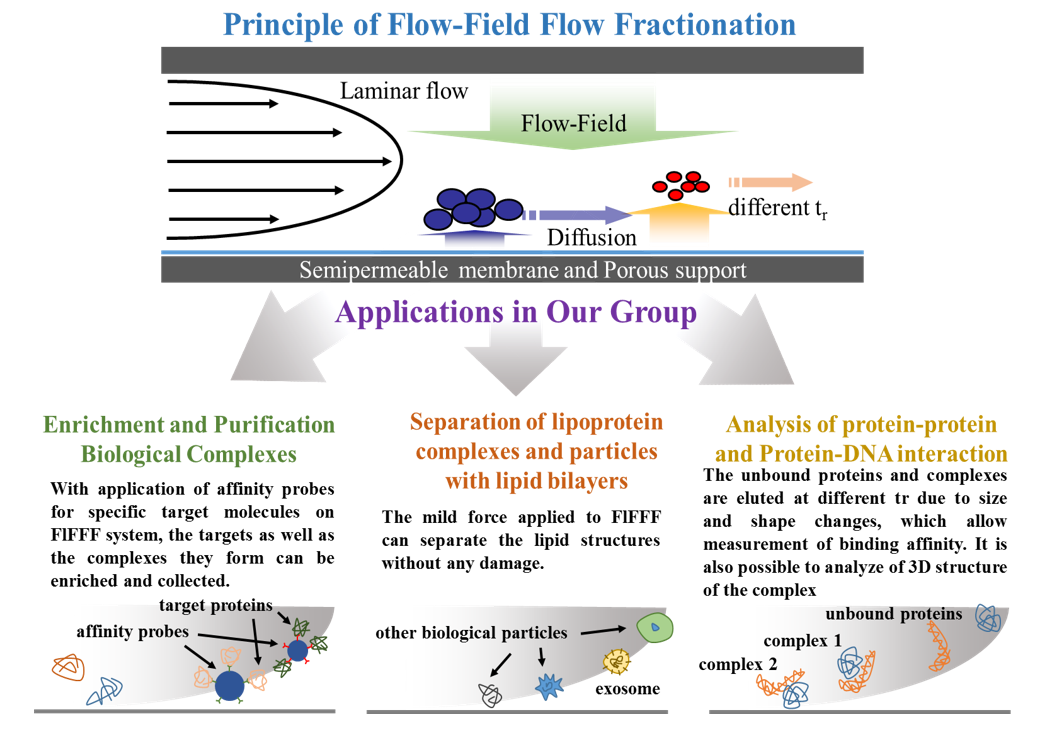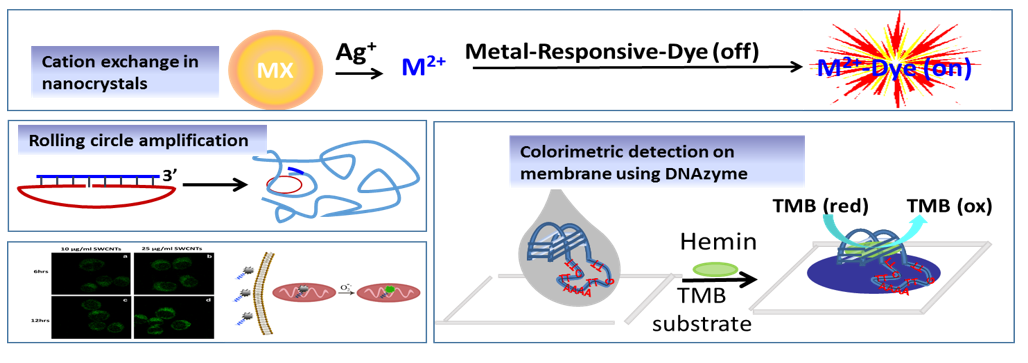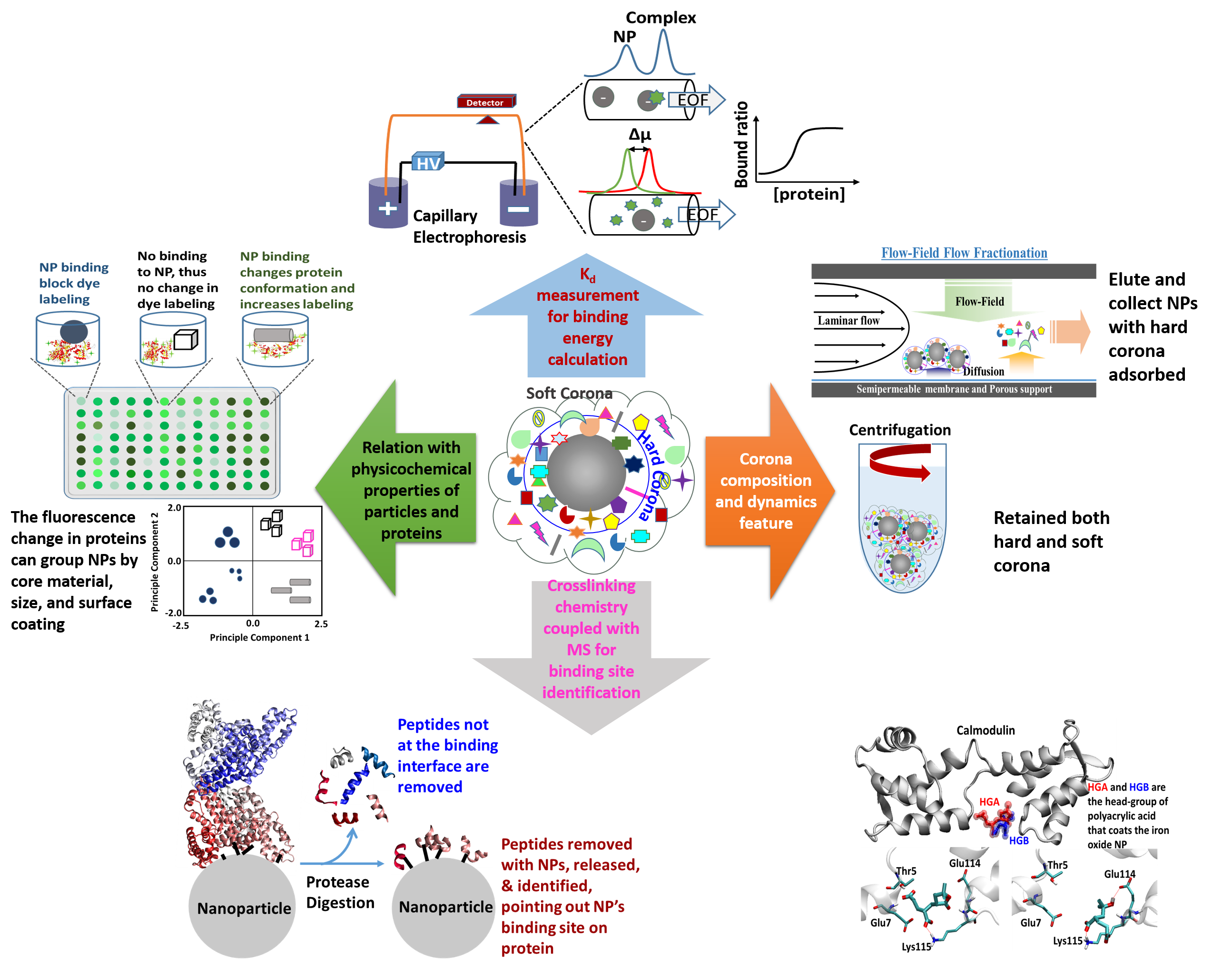|
Zhong Research Group |
|
Research |
We are interested in identifying and detecting biomarkers for disease diagnosis, as well as studying the biological functions of these markers. Our works are enabled by various tools employed in the group, mainly including the open channel separation techniques, microfluidic devices, and functional nanomaterials. Below lists two major on-going directions in the group. I.Biological functions of circulating microRNAsCirculating MicroRNAs (miRNAs) are invaluable as non-invasive and potentially powerful biomarkers in disease diagnosis. Such miRNAs are found associated with different carrier species and the amount of miRNA found with these different carriers can be directly related to disease development. Thus, isolation and quantification of circulating miRNA bound to different carriers could provide more detailed information on disease stages and subtypes than the total quantity. In the Zhong Lab, we approach this problem by fractionating the miRNA carriers and obtaining the distribution profiles of miRNAs among various carriers. The fractionation follows a variety novel approaches as illustrated below, which not only can facilitate rapid screening of large number of biological samples, but also can help with studies of the functions, biogenesis, and transportation of the circulating miRNAs. Both can contribute to improvement of our understanding on the biological roles of extracellular miRNAs. II.Bioanalysis using flow-field flow fractionationFlFFF is a separation method that separate macromolecules based on their sizes. Compared to other separation techniques like size exclusion chromatography and capillary electrophoresis, FlFFF uses a mild force for separation, causes little disruption to the target��s structure, and is tolerate with a wide range of biological buffers and salt levels. Thus, FlFFF system can be utilized to separate and analyze intact biological. In our group, this FlFFF system is applied for fractionation of bioparticles with membrane structures like exosomes, analysis of protein-protein, protein-nanoparticle, or protein-DNA interactions, enrichment of specific biomolecules, their interacting partners in biological samples, etc. III.Molecule detection by signal amplification strategiesWe are interested in diagnostic tools that are capable of measurement by patient bedside. We have been devoting our efforts to develop new sensing techniques that can deliver high detection performance with high simplicity, low cost, and good compatibility with point-of-care (POC) testing. Nanoparticles and enzymatic isothermal reactions are two approaches we have been taking to carry out highly sensitive detections without usage of sophisticated and expensive instruments. In addition, we have been seeking target-responsive sensors suitable for in vitro and in vivo measurements of biomarkers.
IV.Interactions between nanomaterials and biomolecules and the relationship between protein corona and biological responses to nanomaterialsProteins adsorbed on nanomaterial surface, called the protein corona, could govern the interaction of nanomaterials with cells and tissues, and thus determine their uptake, distribution, toxicity, etc. We have employed several analytical tools, including capillary electrophoresis, flow-field flow fractionation, and fluorogenic dyes to study: (1) the dependence of protein interaction on the physicochemical properties of nanomaterials; (2) the composition of protein corona; and (3) the biological consequence of protein binding.
|



